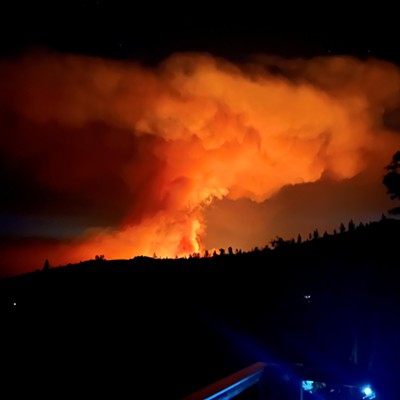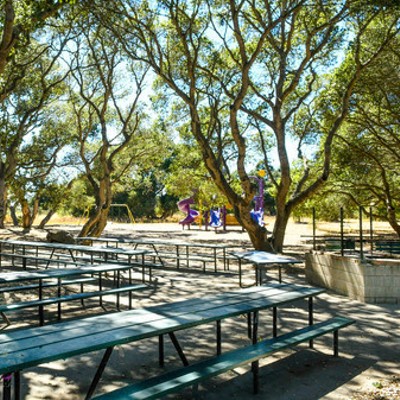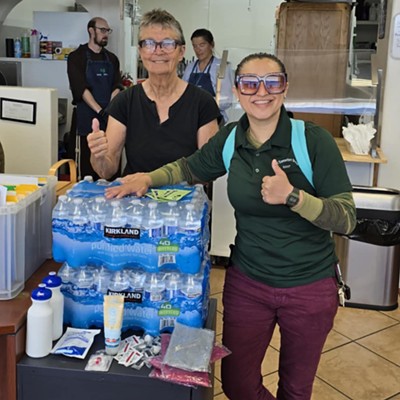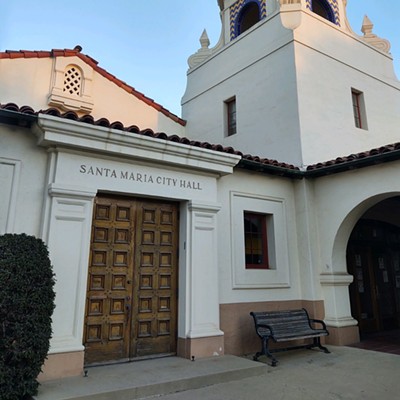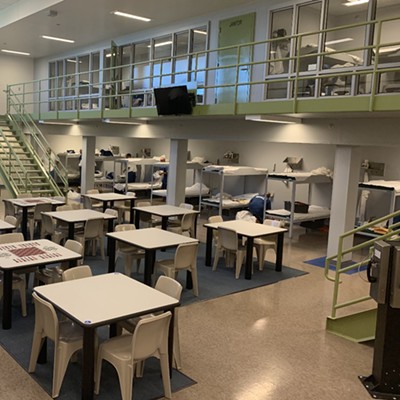Greasy banana peels, old lettuce heads, chopped-off jalapeño stems, coffee grounds, and bread crusts from all California kitchens have a new destination.
As of Jan. 1, a new state law requires schools, businesses, restaurants, and households to recycle their organics—and local governments have to oversee the new recycling program—to mitigate climate change. It’s the biggest change in California trash collection since the state began recycling in the 1980s, according to CalRecycle, the state’s recycling agency.
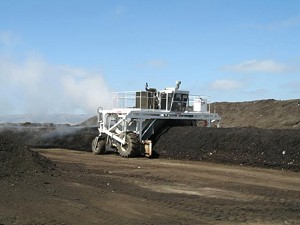
Local entities like the Santa Maria-Bonita School District have managed organic waste through composting programs for years, but this law will require them to go even further, district Food Service Coordinator Carlos Murta said.
“About three years ago, we started our compost program after a couple of pilots with the city and our kitchens. Every time we cook in our kitchens, we basically gather all the organic waste and we put it in the bins that the city provided,” Murta said.
Each of the district’s 21 school sites fills one 44-gallon bin per week with any unused food. From there, the city collects the waste and takes it to a composting facility, he continued.
“The next step is composting the food waste from the kids in the cafeteria. We were supposed to pilot this [program] last year, but because of COVID we had to wait a little longer,” Murta said.
Now, the Santa Maria-Bonita School District will select one school for a test site where kids will throw organic waste into separate bins, he said.
“We wanted to do a pilot program to understand the challenges before we come up with a program for the district. Some of the challenges we foresee is educating every student how to properly sort out the waste,” Murta said. “From there, it will mostly be logistics; making sure we have enough bins to collect food waste and having an appropriate pickup schedule, so waste doesn’t stand outside for more than a couple days.”
Once everything’s in place, the school district will identify its best practices, and figure out how to support the program on a continuous basis—not just the first few months, he said.
The city of Santa Maria will go through a similar shift as officials begin to implement the new law and nudge residents to change how they deal with food waste, Santa Maria Utilities Manager Shad Springer said.
“We’ve been doing commercial organics recycling for years, the difference now is the state implemented it. We’ve begun outreach to begin implementation of the program,” Springer said.
Signed into law in 2016—but enacted in 2022—the California Food and Yard Waste Recycling and Food Surplus Recovery Law requires local governments across the state to create a new organic waste collection program, enforce new regulations, and collaborate with food banks—or other food collection agencies—for a local food recovery program, he said.
“There’s a lot of moving parts, and we are all learning as best as we can. There were dozens of pages of ordinances to be adopted, and it’s the most significant change in solid waste collections we’ve seen in decades,” Springer said.
City staff will have to educate residents on what items go into each bin, set up partnerships with various food banks, and acquire new bins, trucks, and other necessary equipment, he said.
Springer estimates they would need an additional $1 million for three new, weekly collection routes, buying three new trucks, hiring drivers, and providing their training along with an additional $1 million for ongoing operation costs.
“There are significant portions of the legislation that require implementation, and—at this time—we haven’t quantified what those additional costs would be,” Springer said.
Project funding will come from waste collection fees, and the city is also pursuing grant funding to help defray the costs to local businesses, he said.
Currently, Santa Maria pays Engel and Gray, a Santa Maria-based composting company, for its organic waste management, company Vice President Bob Engel said.
Engel and Gray creates compost out of organic waste and sells it to agricultural, landscape, and construction businesses across the Central Coast. Companies buy the compost because it makes the soil healthier by banking carbon in the ground, helping with water retainment, and giving plants extra nutrients, Engel said.
“It’s a good thing people are going to recycle organics. It’s good for the environment because you are improving the soil,” he said.
Plastic, however, will be a problem, Engel continued.
“The main thing we are concerned about is contamination within the organics. We need people to put just organics, not plastic bags and not plastic pieces [in their bins],” Engel said.
The company receives organic waste with a lot of contamination and must handpick plastics out of the compost. If there is plastic in a batch that can’t be removed, then the whole thing is contaminated, he said
“It’s a lot on the shoulders of the consumer and the general public. They have to make the right choice,” Engel said. “You can educate kids in a grammar school and teach them in the cafeteria, but trying to drop a can off in somebody’s house with six household members living and dropping things in, it’s a little different.”
Engel and Gray charges Santa Maria by material and volume, and city Mayor Alice Patino is worried about how new costs will affect residents.
“This is the [state] government overreaching again with a one-size-fits-all [plan]. … It seems like the cost doesn’t matter. The cost to the city of Santa Maria is going to be great, and who pays it? The taxpayers. And yet they have no say in what the state does in ordinances,” Patino said.
During the Jan. 4 City Council meeting, Patino voted against the ordinance to implement the new law—even though it’s a state requirement—because she said it’s wrong and negatively impacts communities.
“I don’t see how this is a win for Santa Maria or even California,” she said. “It’s really good they [the state government] want to dispose of our organics and figure out how to do this, but we at the local level have to deal with the reality, and that’s where the rubber hits the road. It’s frustrating for us that they don’t give us a choice in these mandates.”
Patino said part of her frustration with the ordinance stems from its reasoning: To mitigate climate change by reducing methane emissions—a pollutant that traps heat in the atmosphere—caused by organic waste in the landfill. Right now, the Santa Maria landfill diverts methane to power Marian Regional Medical Center’s electricity and heating, but the law doesn’t recognize this as emission reduction.
“Here we are doing a good job in Santa Maria; we are trying to do the right thing, and Sacramento doesn’t acknowledge that. It seems like the cost [of new program implementation] doesn’t matter,” Patino said. “We were taking some of those gases and using that for beneficial use. The state of California doesn’t recognize that as a beneficial use; that use, and that technology needs to be recognized. We are trying to do what is right.”
Although a lot needs to be formed and finalized for the new organic waste ordinance, faculty at the Santa Maria-Bonita School District see it as an opportunity to educate students on climate change and organic waste recycling, Food Services Coordinator Murta said.
“Our biggest excitement is to see the end result. To see the students doing it without any instruction is the greatest feeling. We are in the education business and [believe] they should learn how to do compost and recycling. It’s important,” he said.
Reach Staff Writer Taylor O’Connor at [email protected].


